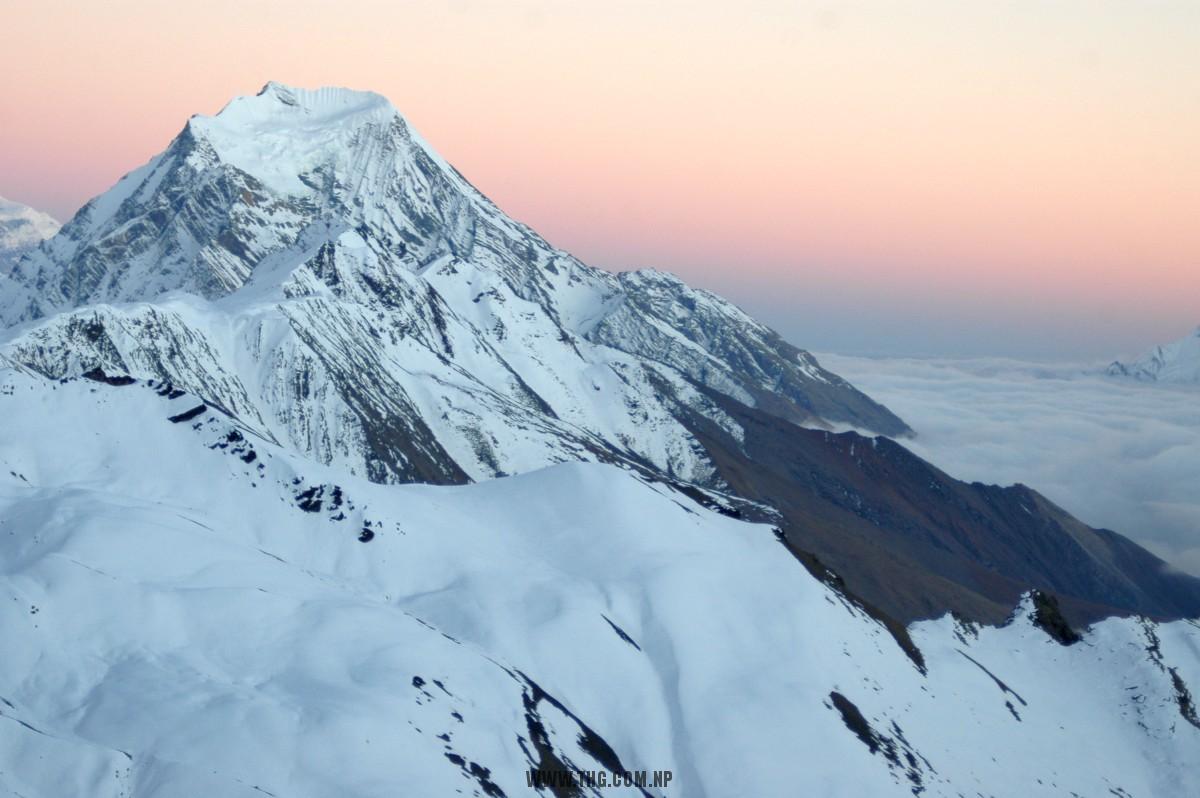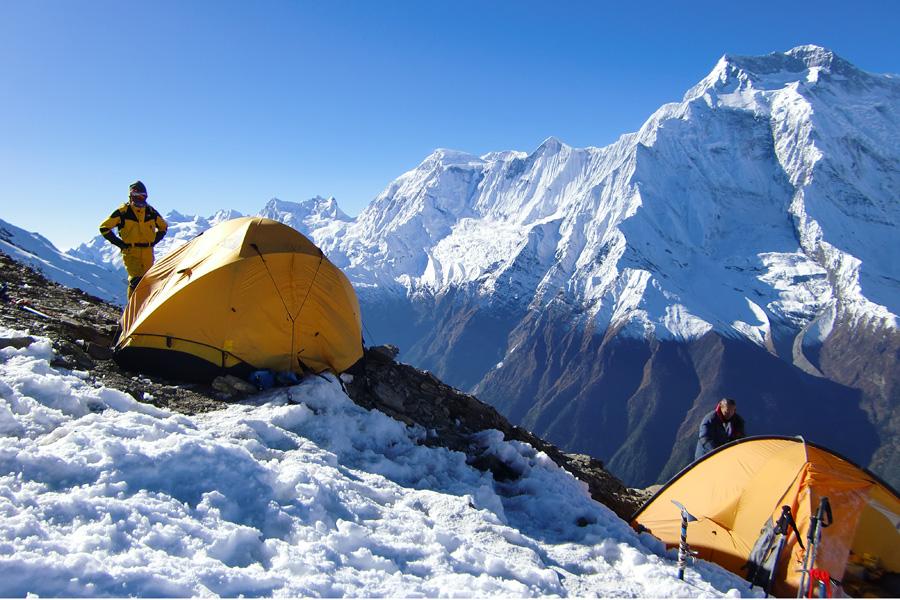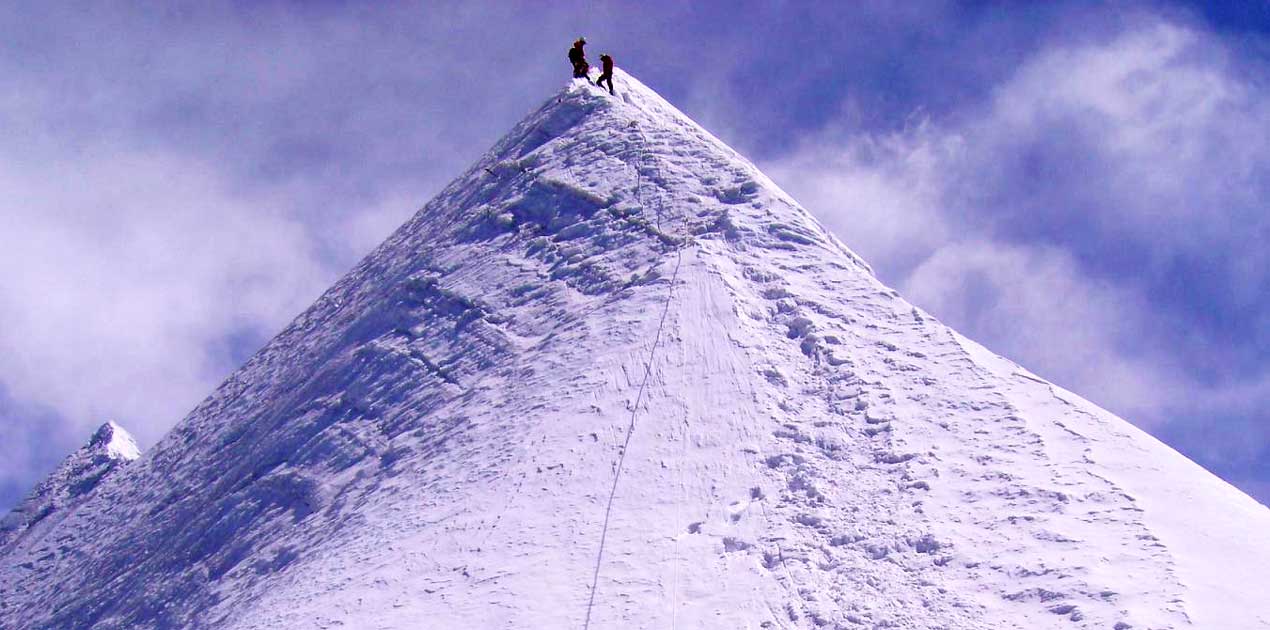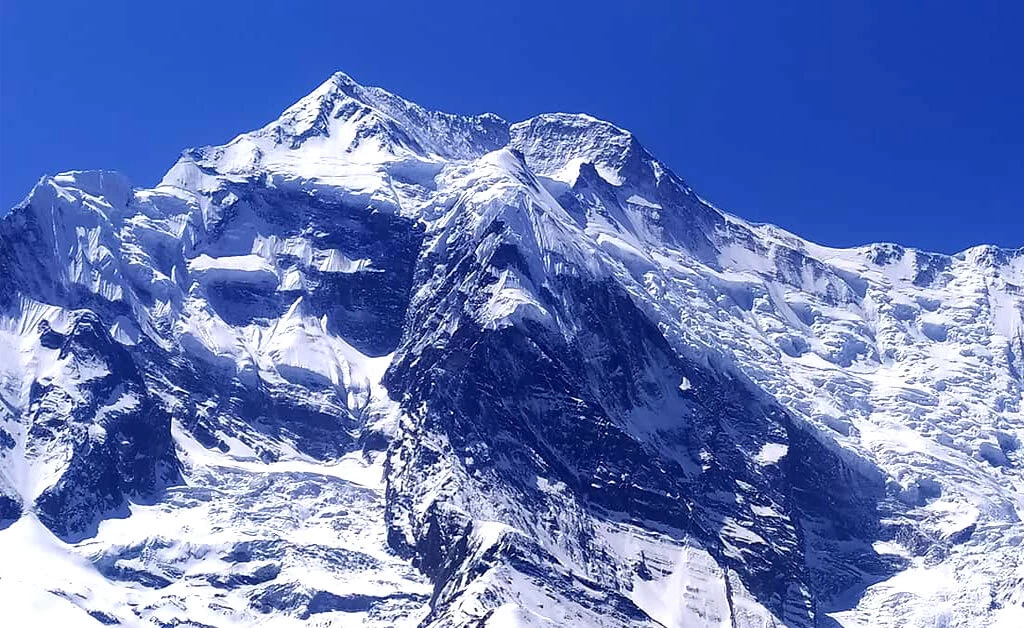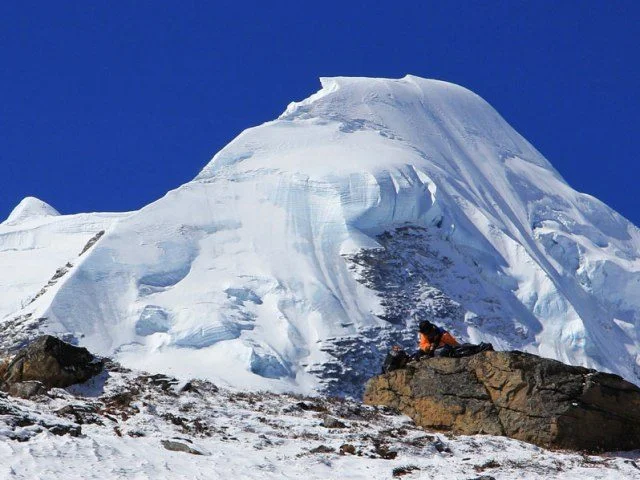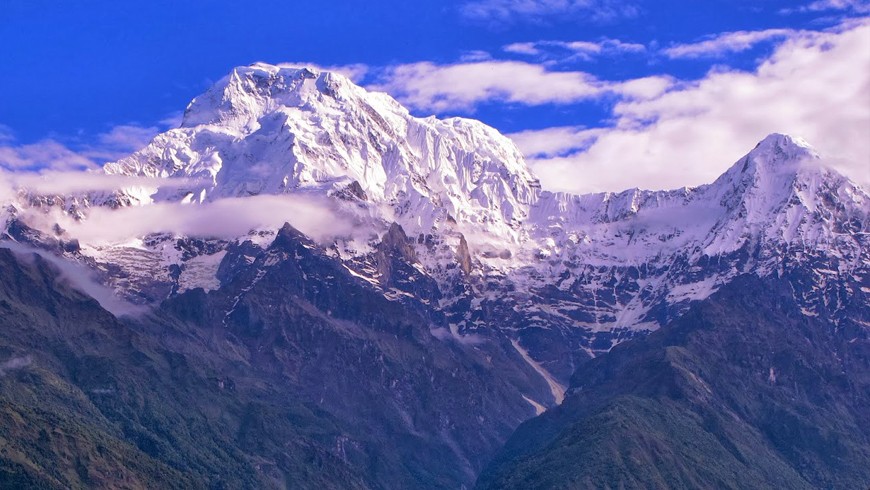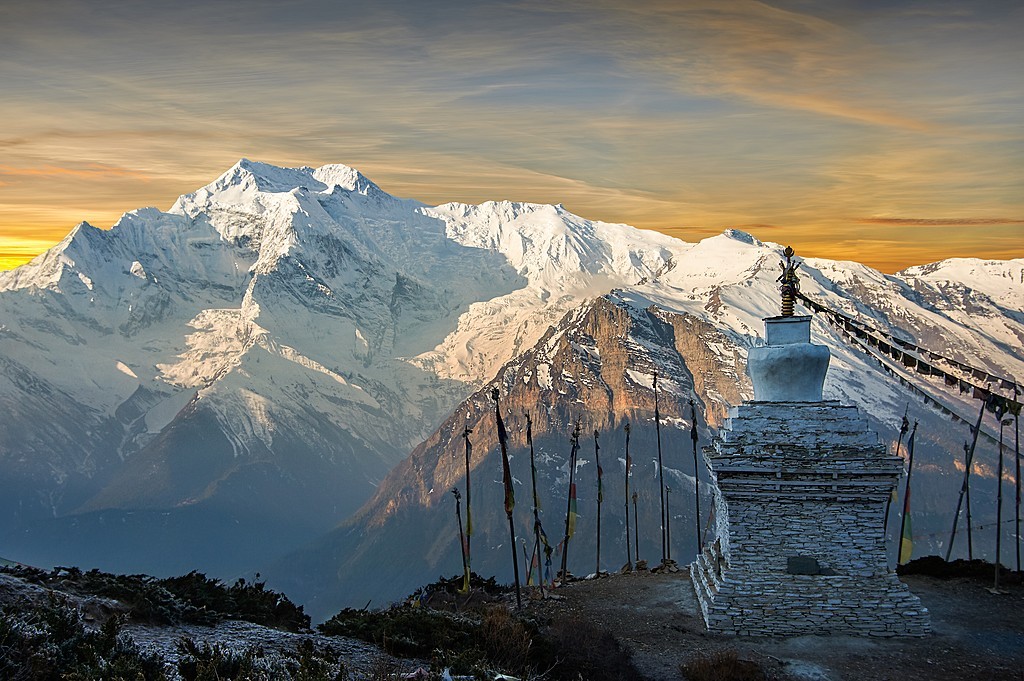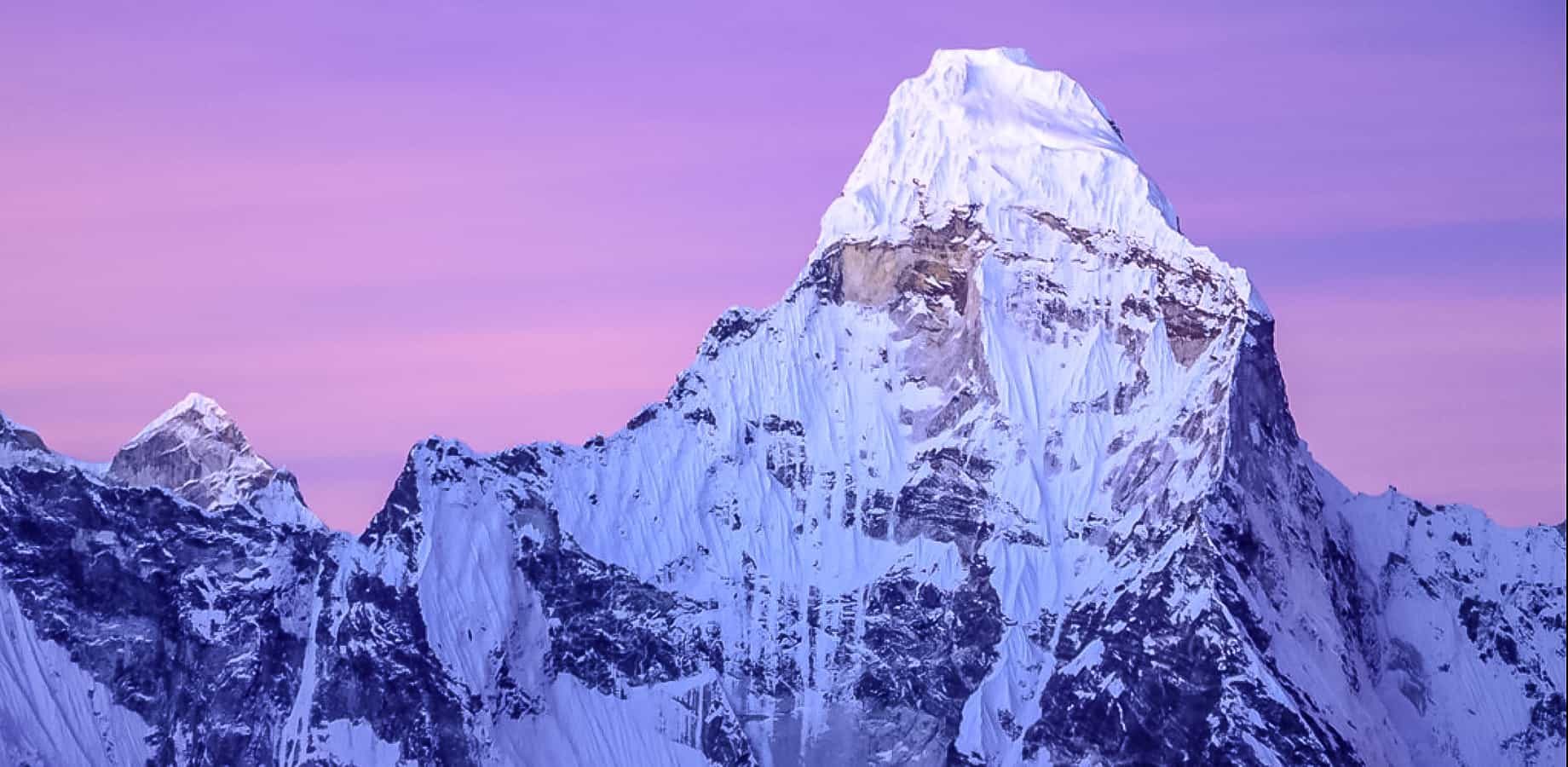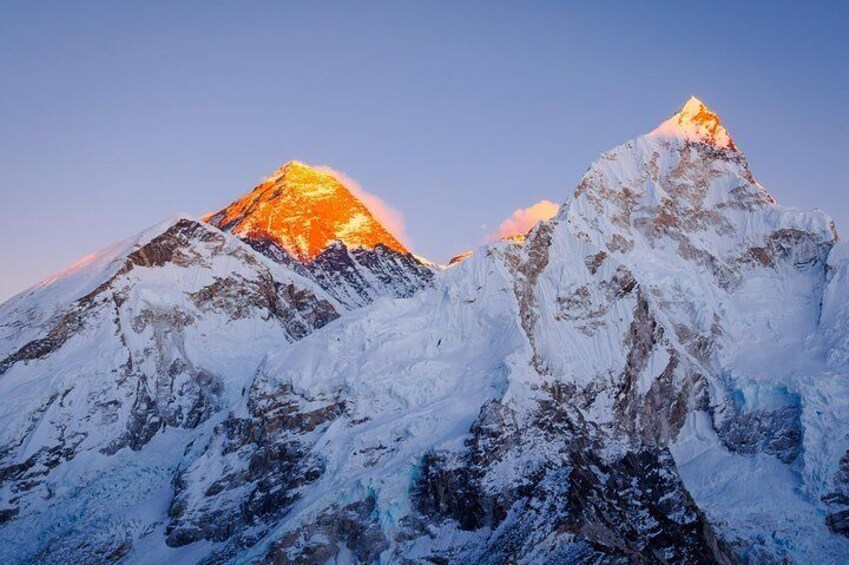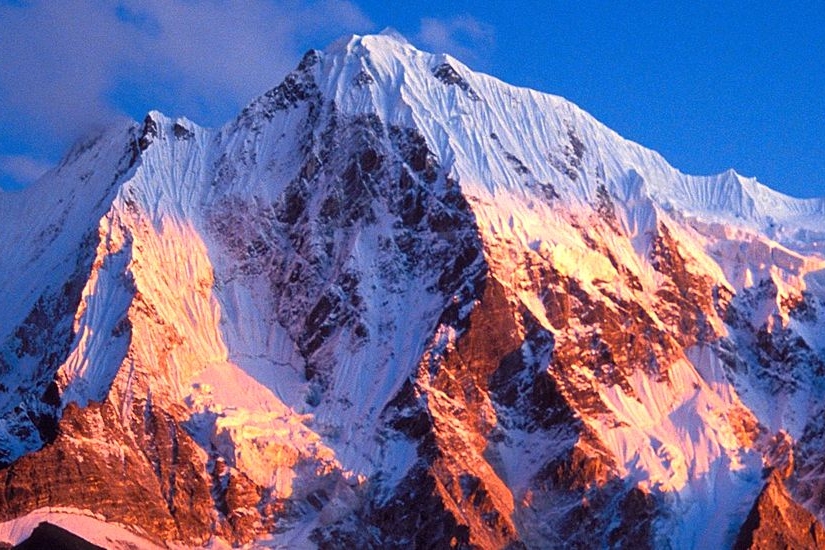Trip Facts
Highlights
- Summit Pisang Peak (6,091m/ 19,983ft), and enjoy the most beautiful Himalayan views from the top
- One of the easiest expeditions in Nepal
- Visit Muktinath – one of the sacred Hindu-Buddhist temples
- Cross Thorang La Pass – the highest pass
- Indulge with 3600 dazzling close views of Annapurna range – Annapurna – I (8,091m/26,454ft), Mt. Machhapuchre (6,997m/22,956ft), BharhaChuli (7646m/25,085ft), GandharvaChuli (6,248m/20827), and more
- Be with charming local people (mostly Thakalis, Gurungs &Magars), their settlements and culture, fertile farmland, and traditional farming.
- Enjoy Hot Spring at JhinuDanda (Hill)
- Well-experienced licensed guides, strong porters, and support crew members
- Physically less challenging journey and heavenly natural pleasure – Collect lifetime experiences
- One of the most satisfying expeditions in Nepal.
Overview
Pisang Peak (6,091 meters/19,984 feet), also known as Jong Ri, lies between Annapurna I and Manaslu in the Manang district. In the year 1955, a German Expedition team first climbed the Pisang Peak successfully. Pisang Peak thereafter came to limelight and has become a popular trekking peak in the Annapurna region. The trekking offers a captivating journey through diverse landscapes, cultural sites, and vast biodiversity. Likewise, climbing and summiting the peak is a thrilling and triumphant moment.
Pisang Peak is straightforward, with quick climbing experience. Though Pisang Peak is characterized as an easy climbing Peak in the Himalayas, a fair enough fitness level with sound health conditions is required for a successful adventure. Summiting Pisang Peak offers close-range panoramic views of stunning mountain peaks, including Annapurna, Chulu Range, Manaslu, Himlung, Tilicho Peak, Damodar, etc.
The 17-day Pisang Peak Climbing itinerary of Nomadways Adventure offers a fascinating and adventurous journey in the Himalayas with a harmonious balance of the trek and climb to the trekking peak, Pisang.
Itinerary
Upon your arrival at the Tribhuvan International Airport, one of the Nomadways Adventure representatives will be waiting for you at the airport. As soon as you complete your Nepal Entry Visa obtaining procedure, we will have a meet and greet, and you will be transferred to the hotel (3-star to 5-star as per request) where you can rest and relax for the day.
The journey continues from Bulbule, trekking alongside the Marsyandi River. The trail to Chamje is adorned with the background of incredible Himalayas and surroundings of enchanting high-mountain landscapes. The elevation slowly rises, passing through villages like Ngadi and Bahundanda along the winding trails. You can witness and explore the local cultural and traditional architecture of the villages. Traverse through dense forests, cross suspension bridges over the rivers, and finally reach the destination of the day, Chamje.
After an overnight stay at Chamje, the day begins with a trekking journey towards Dharapani. The trekking trail primarily crosses several thrilling suspension bridges, the first of which is over the Marshyangdi River. Continue on the trekking journey, traversing the rhododendron forests, terraced fields, prayer wheels, and steep rocky paths of the Manang region. After several ascents and descents, the destination, Dharapani, closes up. Dharapani is a charming traditional village of Gurung communities.
The fourth-day journey starts from Dharapani where the trail leads to Chame. As you traverse the remote villages (Bagarchap, Timang, etc.), you can gain deep insights into the traditional rural lifestyle, Tibetan-style culture, and religion. The trail follows the uphill climb, passing through the lush greeneries and vibrant rhododendron blossoms and again connecting the Marshyangdi Riverbank. Finally, following the distinctive trails, Chame comes into view, which is the headquarters of the Manang. Trekkers can find cozy and comfortable teahouses/lodges in the alpine environment of Chame.
Chame to Upper Pisang is an alluring segment of trekking along the Annapurna Circuit. The trekking journey features an enchanting transition from lower to upper Himalayan regions. The trek heads towards Bharatang, a small settlement and trekking alongside the Marsyandi Riverbed, the trail ascends, crossing a suspension bridge to reach Dhikur Pokhari. This is a mesmerizing alpine lake within rugged Himalayan topographies, offering tranquility.
The trail then descends to lower Pisang village, with terraced farmlands and Tibetan-style houses adorned with prayer flags. Further traversing the enchanting forest areas and several settlements, we reach Upper Pisang for an overnight stay. Upper Pisang is a village located at a high altitude in an alpine environment. From there, Pisang Peak is seen to the north, along with the magnificent views of the Annapurna ranges.
On this day, we will acclimatize before further trekking to the higher elevations. On the acclimatization day in Upper Pisang, you can rest and relax to restore the lost energy during the several hours of each day trek. A well-rested body can start fresh on the next-day journey with upgraded strength and stamina. To build up your endurance capacity, you can engage in light physical and cardiovascular exercises.
Spend your leisure day acclimatizing to the environment, which helps the body to adjust to the elevation and high-altitude surroundings. It helps to reduce the potential altitude sickness attacks. Next, you can review your gear and climbing equipment, and if time permits, you can visit and explore the Upper Pisang village. Know and understand the culture and tradition of the region and marvel at the amazing mountain views seen from there.
The trek begins from Upper Pisang Village after an acclimatization day, passing the traditional villages. You can witness the prayer flags, monasteries, ancient architecture, unique culture, etc. while passing through the settlements. The trail heads towards Pisang Peak Base Camp, where you have to ascend through the alpine terrains and rocky paths. We will finally reach the base camp from Pisang and stay there for the night. The Pisang Peak Base Camp offers awe-inspiring views of the stunning Himalayan peaks.
The trail from base camp is narrow, rocky, and potentially snowy with some steep sections. Continue ascending the barren landscapes to gain a significant elevation of Pisang Peak High Camp, approximately about 1,000 meters. Throughout the trek, the incredible views of the Manaslu and Annapurna Mountain ranges dominate the journey.
Reaching High Camp at 5,400 meters, the tent will be set to make necessary arrangements and prepare for Pisang Peak Climbing. The expedition crew will thoroughly check to make sure whether or not you are acclimatized for the summit push. As we will be spending our night at high camp, take the high camp opportunity to rest and acclimatize, adjusting the body to the higher elevations.
Summit to the Pisang Peak is an adventurous-filled, exciting journey. The climb to the summit involves steep technical sections, requiring a cautious ascend. With the help of a climbing guide fixing the rope, the distinctive way leads toward the summit. Ascending the final ridge, you can finally step upon the summit of Pisang Peak. It is a triumph moment upon conquering the majestic Peak. Enjoy the summit view of Annapurna, Chulu Range, Manaslu, Himlung, Tilicho Peak, Glacier Dome, Damodar, etc. Celebrate and photograph the success and retrace your paths to get back to the base camp.
The journey starts from the Pisang Peak Base Camp, amidst the Himalayas. Start a descent to connect with the Annapurna Circuit trail and head towards Manang Valley. Most of the time, you will make a journey trekking alongside the riverbeds, encircled by the enchanting mountainous scenery. After around 5 to 6 hours of the exhilarating trek, Manang Valley approaches. Nestled in the Marsyandi River Valley, Manang offers serene Himalayan landscapes along with the unique culture, tradition, and history of the region.
Traversing the diverse landscapes and soaking into the cultural dimensions of the trek, the journey from Manang Valley heads towards Yak Kharka. The enchanting Valley with Tibetan-style architecture and monasteries is left behind while climbing the steep uphills. Enjoy the wonderful views of Annapurna and Gangapurna along the way and follow a gradual pace of ascent. Navigating the alpine terrains, forested areas, and Himalayan vegetation, you will reach Yak Kharka. Yak Kharka is mainly pastureland (as Kahrka refers to a high-altitude grazing area for Yaks), encircled by the alpine meadows. You can find small settlements of people there where you can have insights into the local culture and living style of residents.
This day, we head out from small villages to follow the destination Thorung Phedi. Thorung Phedi is a foot of challenging Thorung La Pass. The trek starts from the Yak Kharka, surrounded by mountainous topographies, and follows the rocky paths with more rugged terrains towards Thorung Phedi. The landscapes start to transform into high alpine terrains, and the trails become steeper as you approach Thorung Phedi. Along the way, the alluring views of the snow-capped Himalayas create a magnificent setting for the trek.
This day of trekking journey involves crossing one of the high mountain passes, Thorung La and heading towards the holy temple Muktinath. Thoung La is a high-altitude pass at 5,416 meters/17,769 feet. We start on an early morning trek with the goal of navigating the Thorung La Pass before midday. Traversing the rocky trails and lush vast forests, you reach the Thorung La Pass, where there is a high chance of snow accumulation and strong winds. While crossing the challenging Pass, the panoramic views of mount Annapurna, Dhaulagiri, and enchanting mountainous landscapes are seen.
After that, we follow a gradual descent on steep rocky terrains from the Pass and make a way to reach Muktinath. Slowly, the descent becomes less steep, and the alpine surroundings change to sub-alpine landscapes. Witnessing the views of the amazing Kali Gandaki Valley, we reach our destination, Muktinath. This is a pilgrimage site of Buddhist and Hindu religions, offering a harmonious blend of natural and cultural significance.
On this day, you can have an early morning tour around the Muktinath temple before proceeding the trekking journey. Don’t miss an opportunity to have a holy bath in the 108 waterspouts and explore the underground natural eternal flame. Then, start fresh on the journey to Tatopani, a famous place for natural hot springs.
Descending from the high-altitude arid landscapes of Muktinath, the trail follows the transition journey of sub-alpine landscapes to a sub-tropical environment. Traversing several traditional villages and rhododendron-bloomed forested areas, we finally reach Tatopani. Dipping into the hot springs of Tatopani offers a relaxing conclusion to the trekking journey.
After a successful trekking and climbing adventure of the Pisang peak, we finally return to Pokhara to culminate the journey. We embark on a scenic drive from Tatopani along the Kali Gandaki George to reach the popular travel destination Pokhara. The journey is picturesque, passing through lush landscapes, pristine rivers and waterfalls, rural villages, winding roads, green hills, and finally witnessing the serene lakes at Pokhara. Time permitting, here you can engage in different adventure activities and spend quality concluding time marveling at breathtaking mountain views.
Bidding farewell to Pokhara, we will either fly or drive back to the capital, Kathmandu today. Check-in at the hotel and relax. The rest of the day is at leisure.
Depart from Kathmandu or extend your stay for further exploration.
Cost Includes:
- All airport transfers
- All airport taxes
- Luxury Hotel in Kathmandu for two nights with breakfast
- An experienced English-speaking Govt. registered trekking guide and local porters to carry luggage (2 trekkers: 1 porter)
- Full meals: Breakfast, Lunch & Dinner of your choice
- Supplementary snacks: energy bar and cookies
- Seasonal fresh fruits desert every day
- Unlimited Chlorine treated Safe Drinking water
- Accommodation: Lodge
- A comprehensive First Aid kit
- Oxi-meter: To check heart rating and oxygen saturation to Everest Base Camp and return
- All government and local taxes
- Trekking equipment: down-filled sleeping bag, walking poles, and duffel bag
- Souvenir: Trekking Route map printed T-Shirts
Cost Excludes:
- Lunch and dinner in Kathmandu
- Hot and bottled drinks
- Electronic device re-charge Wi-Fi
- Hot shower
- Travel insurance and medical evacuation
- Tipping
Equipment
Trekking requires careful selection of gear to ensure comfort, safety, and efficiency on the trail. Depending on the conditions (terrain, weather, duration), the equipment you need may vary, but here’s a comprehensive list of essential trekking gear:
- Backpack
- Capacity: Typically, for a multi-day trek, a 40-60L pack is ideal.
- Fit: Adjustable straps for shoulder, chest, and hip.
- Features: Hydration system compatibility, side pockets for easy access, and a rain cover.
- Footwear
- Trekking Boots: Look for boots with good ankle support, durable soles (Vibram is a popular choice), and waterproof features.
- Trail Shoes: For lighter treks or well-maintained paths, trail shoes may suffice.
- Sock Layers: Merino wool socks or synthetic socks that wick moisture and reduce blisters. Avoid cotton.
- Gaiters: To keep debris, mud, and snow out of your boots.
- Clothing (Layering System)
- Base Layer: Moisture-wicking (synthetic or merino wool) long-sleeve top and bottoms.
- Mid Layer: Insulating layer, such as a fleece or down jacket.
- Outer Layer (Shell): Waterproof, windproof jacket and pants. Gore-Tex or similar fabrics are excellent choices.
- Trekking Pants: Convertible pants (with zippers for shorts) can be useful.
- Trekking Shirt: Lightweight, moisture-wicking, and quick-drying.
- Gloves: Lightweight gloves for warmth, plus an additional heavier pair if trekking in cold climates.
- Hat/Cap: A sunhat or beanie depending on the weather.
- Neck Gaiter/Buff: For sun protection, warmth, or dust.
- Sleeping Gear
- Sleeping Bag: Temperature-rated for the conditions you’ll face. Down bags are warmer and lighter but lose effectiveness if wet, while synthetic bags dry quicker.
- Sleeping Pad: Inflatable or foam pads that insulate from the cold ground.
- Tent: Lightweight trekking tents (1-3 person) that suit your conditions. Some options include 4-season tents if you're trekking in harsh weather.
- Hydration System
- Water Bottles: Collapsible or hard plastic bottles (ensure they’re BPA-free).
- Hydration Reservoir: Camelbak or similar bladder systems for easy access to water.
- Water Purification: A filtration system (e.g., Sawyer, LifeStraw) or chemical tablets to purify water from streams or other sources.
- Food and Cooking
- Stove: Compact gas or alcohol stove for cooking on the trail.
- Cookware: Lightweight pots or pans, often titanium or aluminum.
- Fuel: Compatible fuel for your stove (check for availability in the region you’re trekking).
- Food: Dehydrated meals, energy bars, trail mix, nuts, and fruits. Lightweight, high-calorie, and easy-to-prepare foods are best.
- Navigation Tools
- Map and Compass: Always have a paper map as a backup, even if you use a GPS.
- GPS Device or Smartphone with a Trekking App: Make sure to download offline maps.
- Altimeter Watch (optional): Useful for tracking elevation and route progress.
- Lighting
- Headlamp: Hands-free lighting for night-time use, with extra batteries.
- Flashlight: A backup to your headlamp.
- First Aid Kit
- Include basic supplies: Bandages, antiseptic wipes, blister treatment, pain relievers, and any personal medications.
- Personal Medications: Always bring enough for the whole trip, plus extras in case of delays.
- Sunscreen and Lip Balm: Protect your skin from sun exposure.
- Safety Gear
- Multi-tool/Knife: A good multi-tool (like a Swiss Army Knife or Leatherman) is very useful for repairs and emergencies.
- Whistle: For signaling.
- Emergency Blanket: Lightweight and compact for warmth in case of emergency.
- Firestarter: Matches or a lighter, and waterproof if needed.
- Miscellaneous
- Trekking Poles: Help with balance, reduce strain on knees, and improve traction on uneven terrain.
- Towel: Quick-dry, compact towel.
- Sunglasses: UV protection for your eyes.
- Camera/Smartphone: For documenting the journey, with extra storage or a portable charger.
- Personal Hygiene and Toiletries
- Toilet Paper: Always carry biodegradable toilet paper and a small trowel for digging a "cathole" if there are no facilities.
- Hand Sanitizer: To keep clean without access to water.
- Wet Wipes: For cleaning yourself when there's no shower.
- Biodegradable Soap: If you need to wash, use eco-friendly soap.
- Toothbrush/Toothpaste: Compact travel versions.
- Weather Protection
- Sun Protection: Sunglasses, sunblock, and a wide-brimmed hat for sun protection.
- Rain Gear: A high-quality waterproof jacket, pants, and gaiters, especially if you're trekking in areas with unpredictable weather.
- Cold Weather Gear (if needed): Depending on the trek, you might need additional gear like down jackets, insulated gloves, or even crampons for ice or snow.
- High-altitude Treks: Consider gear for altitude sickness (like Diamox), extra layers for extreme cold, and an oxygen system if necessary.
- Long-distance Treks: You might need additional gear like extra food storage, a larger stove, or a lightweight trekking umbrella.
FAQ's
Pisang Peak (6,091 meters / 19,983 feet) is a popular trekking peak in Nepal, located in the Annapurna region. It is known for its stunning views of Annapurna and Manaslu ranges and offers a moderate climbing experience suitable for beginners with basic mountaineering skills.
This climb combines trekking in the Annapurna Circuit, cultural exploration, and a thrilling mountaineering experience. The mix of landscapes, cultures, and panoramic mountain views makes it a standout adventure.
Pisang Peak is classified as a moderate trekking peak, suitable for climbers with basic mountaineering experience. The final ascent involves some technical climbing on snow and ice.
You’ll be supported by experienced guides, porters, and a climbing Sherpa. They will assist with route finding, equipment, and safety measures.
